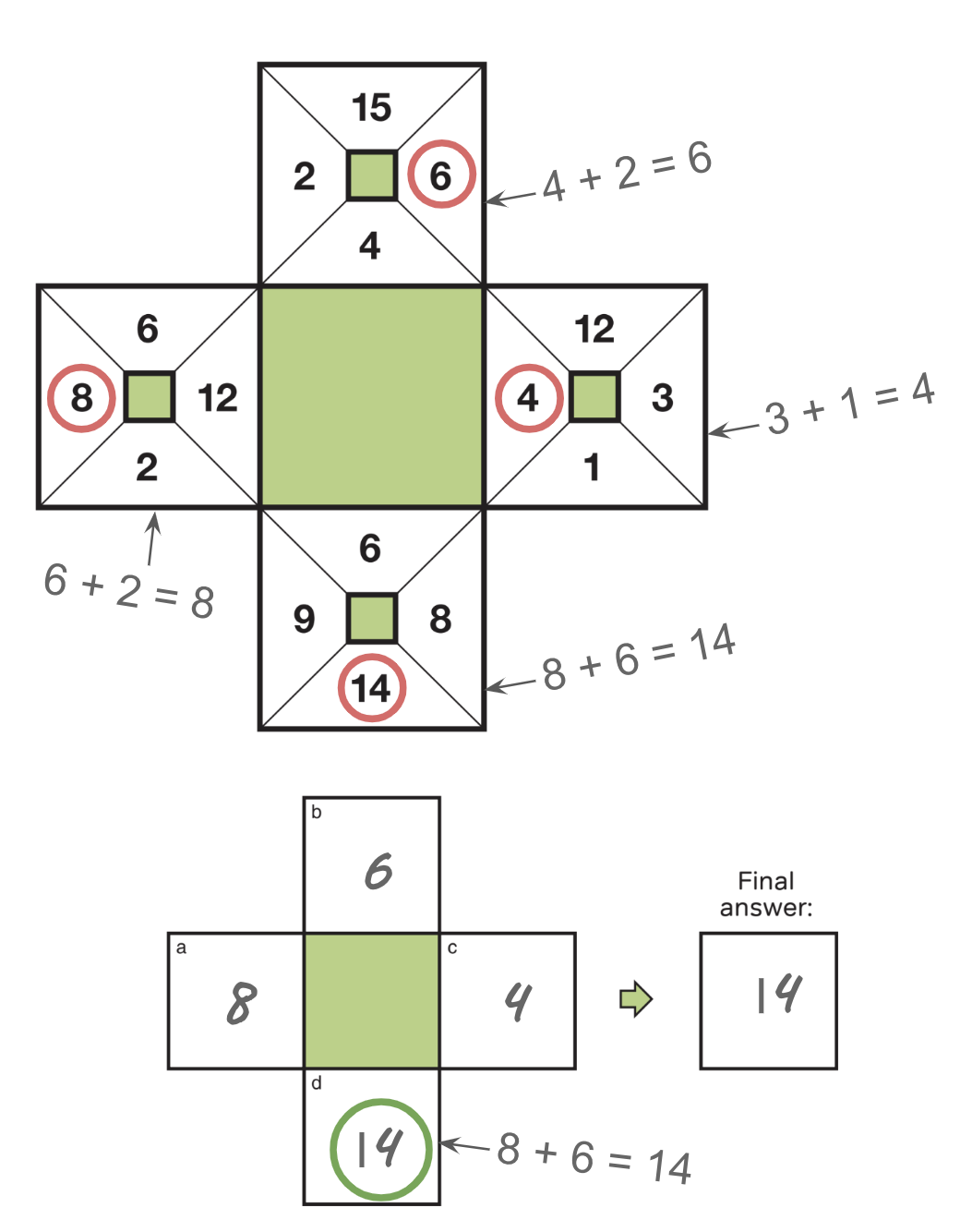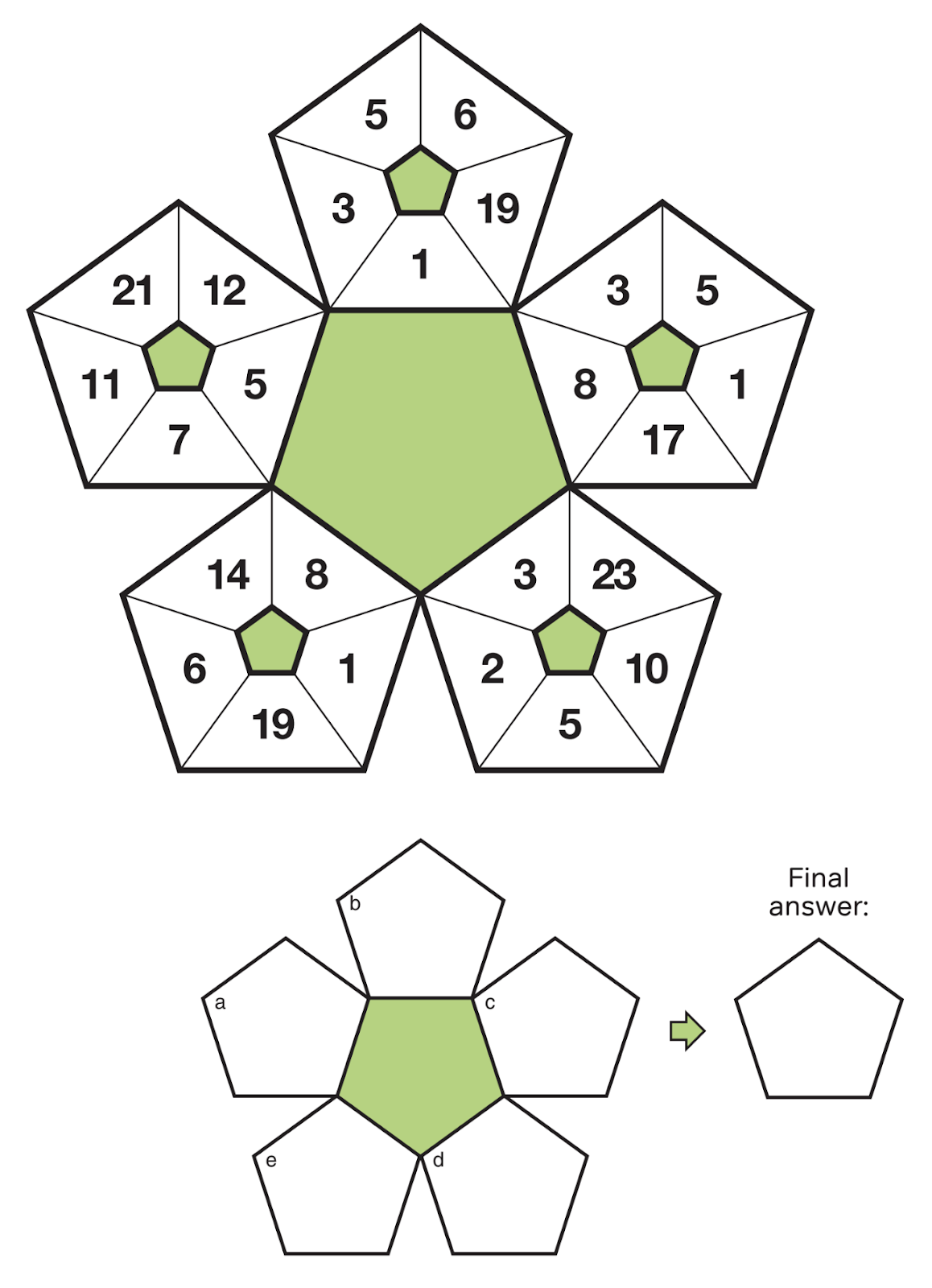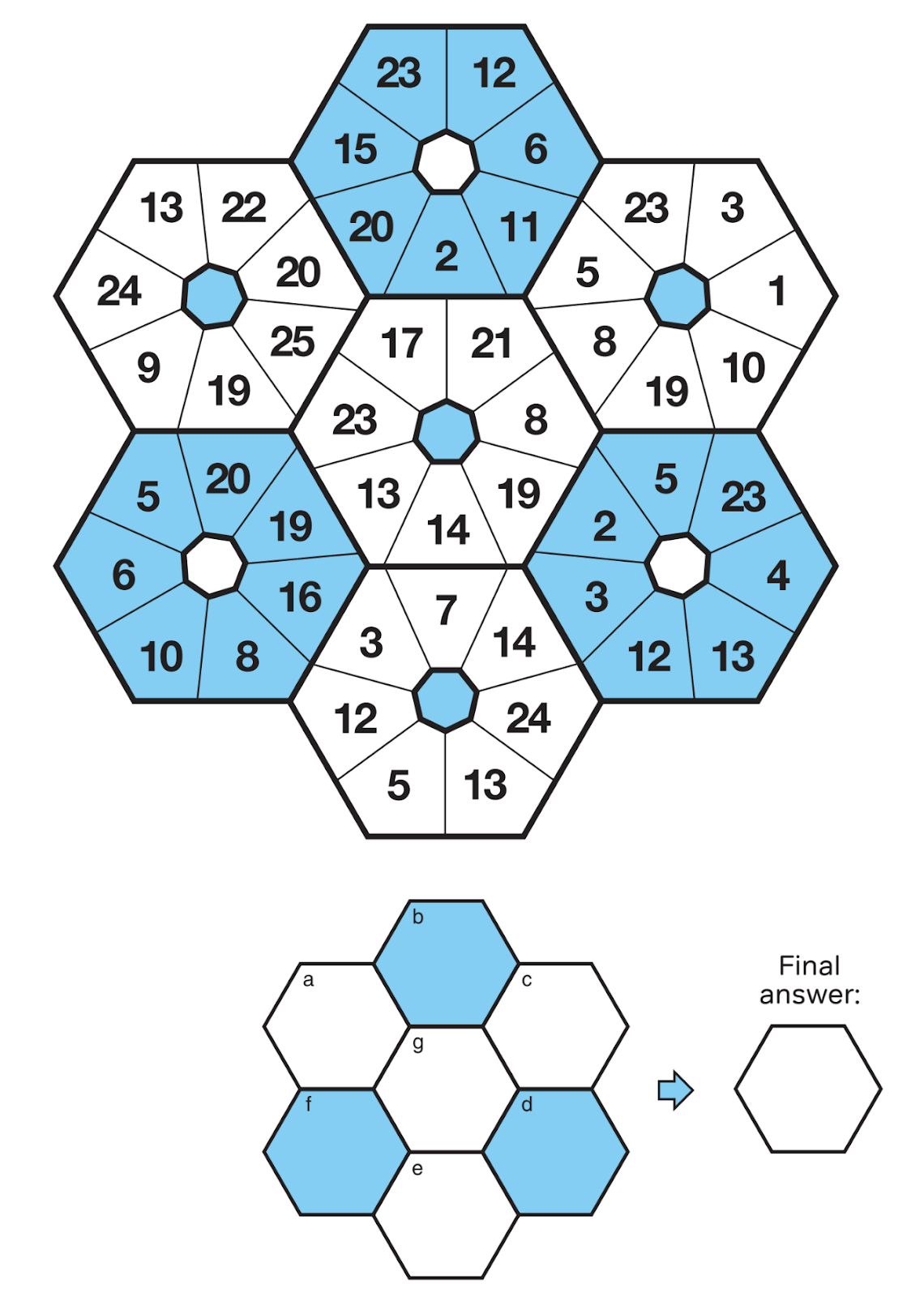Puzzles and Riddles
Learning Goals:
- Add and subtract whole numbers using a variety of tools and strategies
- Determine the missing numbers in equations
- Develop and apply reasoning skills to make and test math predictions
The Challenge:
The goal of these Kakooma puzzles is to find which number in each section is a sum of two other numbers found there (which number can be a total of adding two others?) Once you have found the special sum in each section, use all 4 sums to create 1 final puzzle at the bottom and solve to get your final answer (which of the special numbers from each section is the sum of two of the others?) Here is a solved example:
Now, try solving these trickier kakooma puzzles on your own, or solve some online at Gregtangmath.com/kakooma.
Questions and Prompts to Support your Child:
- What have you tried so far? What could we try together?
- If you feel stuck, try eliminating numbers that couldn’t be the sum of any of the others first. It might help you see things differently!
Extensions & Adaptations:
- If calculations are feeling too tricky, grab a calculator!
- Try creating your own kakooma puzzles by starting each section with three numbers that complete an addition sentence, then adding in some extra numbers that don’t. Make sure to still include numbers that are close, to keep your puzzles challenging.
Source: gregtangmath.com
Categories: Elementary




